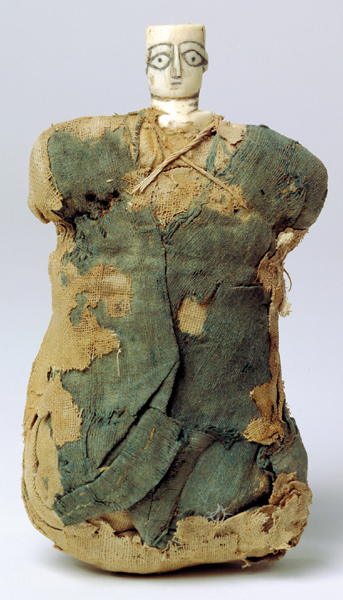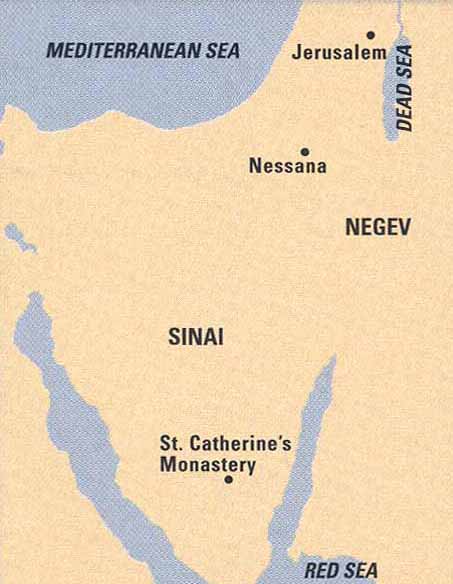
This ivory-headed doll wrapped in linen comes from a Byzantine-period (4th–7th century A.D.) Christian settlement in Nessana, in the west-central Negev desert.

The Negev kingdom of Nabatea was annexed by the emperor Trajan in 106 A.D. to become the Roman Provincia Arabia. After around 400 A.D., the agricultural centers of the region enjoyed great prosperity and growth, partly due to the rise of Christian pilgrimage to sites such as St. Catherine’s Monastery in the Sinai. One of the Negev’s prospering settlements, Nessana was located on the main route to Sinai and Egypt, and by the sixth century came to house a fortress and several churches. Artifacts discovered there include papyrus texts and textiles, well-preserved by the Negev’s arid climate.
The evocative facial features of this 6.25x2.75-inch figure were carved into a piece of ivory and painted black. The green linen covering the body may have been meant to look like the swaddling clothes wrapped around infants for protection from the Negev’s scorpions and snakes. Although the center of linen production at the time was Egypt, analysis of the weaving technique and the ratio of warp threads to woof threads shows that the doll’s “swaddling clothes” were woven locally or in Syria.
Already a library member? Log in here.
Institution user? Log in with your IP address.

